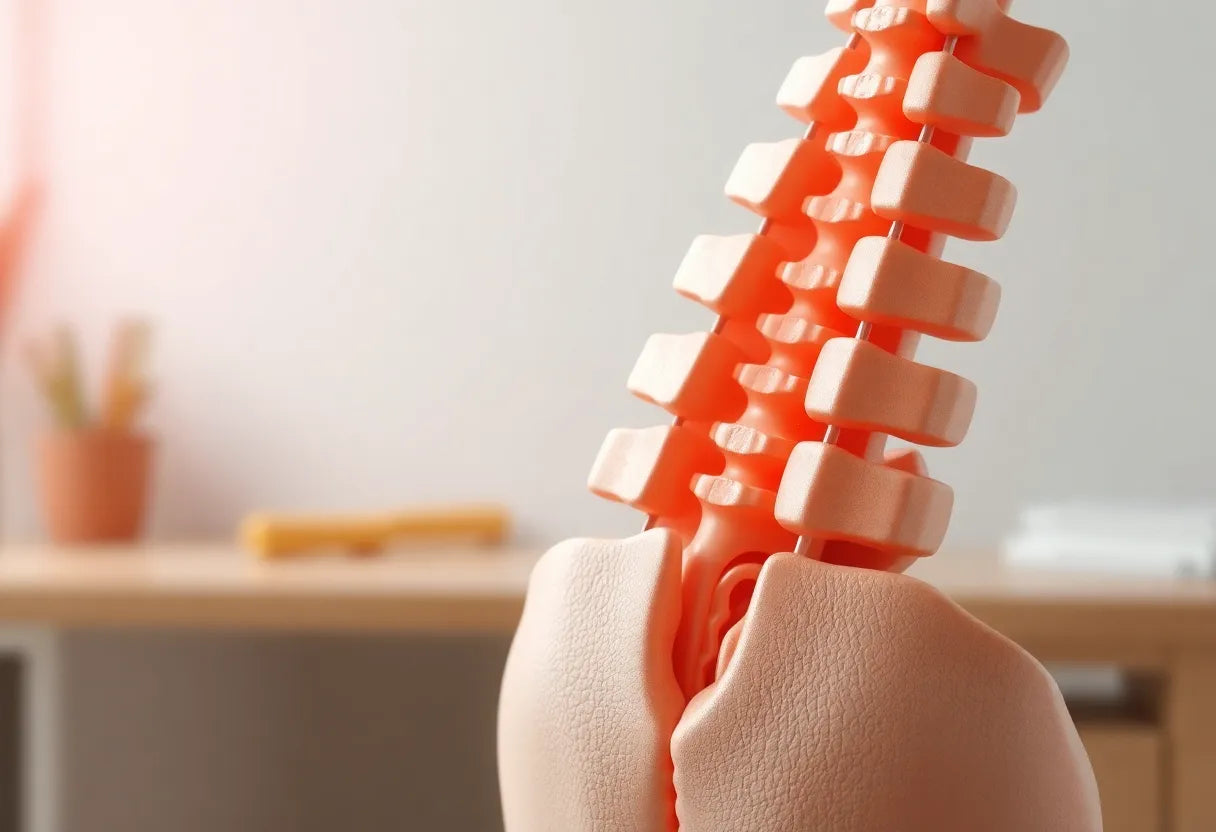Running is a beloved activity for many, offering a range of physical and mental benefits. However, it's not uncommon for runners to experience hip pain after running exercises, a prevalent issue that can significantly impact performance and enjoyment. Understanding the reasons behind this discomfort is crucial for addressing it effectively and ensuring a pain-free running experience.
Understanding hip pain after running
Hip pain is a frequent complaint among runners, often arising from a combination of factors that include overuse injuries, muscle imbalances, and improper running mechanics. Overuse injuries, such as tendinitis and bursitis, can develop when the hip joint and surrounding muscles are subjected to repetitive stress without adequate recovery time. Muscle imbalances, particularly when certain muscles are overdeveloped while others are weak, can lead to uneven strain on the hip joint. Additionally, incorrect running mechanics, such as poor posture or stride, can exacerbate these issues, leading to discomfort.

Lumbar support belt
Relieve and stabilize your lower back during daily activity or after running.
Addressing hip pain early is essential to prevent it from becoming a chronic condition. Ignoring the signs can lead to more severe issues over time, potentially sidelining a runner completely. By exploring targeted exercises, runners can find relief and strengthen the hip area, promoting better stability and reducing the likelihood of future pain.
Prevention is always better than cure, and understanding the root causes of hip pain can guide runners in adopting strategies to mitigate it. From ensuring proper warm-up routines to focusing on strengthening and flexibility exercises, there are numerous ways to support hip health and enhance running performance.
In the following sections, we'll delve into the specifics of what causes hip pain after running and explore a series of exercises designed to provide relief and strengthen the hip muscles. By incorporating these practices into your routine, you can enjoy running without the burden of hip discomfort, ensuring that your passion for the sport remains strong and fulfilling.
causes and prevention of hip pain
Hip pain after running is often linked to specific conditions such as tendinitis, bursitis, and muscle imbalances. Tendinitis occurs when tendons become inflamed due to repetitive stress, while bursitis involves inflammation of the bursa, a small fluid-filled sac that reduces friction between bones and soft tissues. Muscle imbalances, where some muscles are stronger or tighter than others, can also lead to uneven stress on the hip joint, exacerbating discomfort.
Poor running form is another significant contributor to hip pain. Incorrect posture, stride length, or foot placement can increase the load on the hips, leading to strain and potential injury. Additionally, inadequate footwear that lacks proper support or cushioning can exacerbate these issues, making it crucial to select shoes that match your foot type and running style.
Prevention strategies are vital for mitigating hip pain. Incorporating a comprehensive warm-up routine before running helps prepare the muscles and joints for activity, reducing the risk of injury. A cool-down routine post-run is equally important to aid in recovery and flexibility. Strengthening and flexibility exercises targeting the hips can enhance stability and reduce the likelihood of pain. Ensuring your running mechanics are sound and regularly assessing your footwear can also play a key role in preventing hip pain.
exercises for post-run hip relief
To alleviate hip pain and strengthen the surrounding muscles, consider incorporating the following exercises into your routine. These movements are designed to enhance stability, flexibility, and strength in the hip area.
exercise 1: single-leg toe tap
Instructions: Stand on one leg with a slight bend in the knee. Tap the floor in front of you, to the side, and behind you with the opposite foot, maintaining balance throughout the movement.
Benefits: This exercise improves glute and hip stabilizer strength, enhancing balance and reducing strain on the hip joint.
exercise 2: single-leg step down
Instructions: Stand on the edge of a step or platform. Slowly lower the opposite foot to tap the ground, then return to the starting position.
Benefits: This movement engages the side glute muscles and improves hip control, which can help prevent hip pain.
exercise 3: single-leg glute bridge
Instructions: Lie on your back with one foot flat on the ground and the other leg extended. Lift your hips towards the ceiling, keeping the extended leg in line with your torso.
Benefits: This exercise activates the gluteus maximus, contributing to better hip extension and stability.
exercise 4: clamshell
Instructions: Lie on your side with knees bent and feet together. Lift the top knee while keeping the feet touching, then lower back down.
Benefits: Clamshells target hip abductors, improving pelvic stability and reducing strain during running.
exercise 5: dynamic warm-up stretches
Instructions: Include leg swings and lateral lunges to prepare the hips for running.
Benefits: These movements enhance flexibility and prepare the muscles for the demands of running, reducing injury risk.
exercise 6: static cool-down stretches
Instructions: Perform stretches like the butterfly stretch and squat hold after running.
Benefits: These stretches aid in flexibility and recovery, helping to alleviate post-run stiffness and pain.
By incorporating these exercises into your routine, you can strengthen your hips, improve your running mechanics, and reduce the risk of hip pain. Remember, consistency is key, and gradually increasing the intensity of these exercises will yield the best results. In the next section, we'll explore additional tips for managing hip pain and discuss when it's appropriate to seek professional help.
additional tips for managing hip pain
Managing hip pain after running exercises involves a combination of strategies to ensure long-term relief and prevent recurrence. One crucial aspect is load management. If you experience hip pain, consider reducing the intensity or pace of your runs. This approach allows your body to recover while minimizing further strain on the hips. Additionally, regularly assessing your footwear is vital. Running shoes should provide adequate support and cushioning, and it's advisable to replace them as they wear out to maintain proper alignment and support.

Men's Posture Shirt™ - Black
Supports better posture and can relieve pain and tension while running or at rest.
Another effective strategy is to choose running surfaces wisely. Opt for softer surfaces, such as grass or trails, which can reduce the impact on your joints compared to hard surfaces like concrete. Practicing correct running techniques, including maintaining good posture and proper stride, can also play a significant role in minimizing hip pain. Consider consulting a running coach or physiotherapist to assess your form and make necessary adjustments.
when to seek professional help
While self-management strategies can be effective, there are times when professional help is necessary. If your hip pain persists despite implementing these tips, is severe, or interferes with daily activities, it's important to consult a healthcare professional. A physiotherapist or sports physician can provide a thorough assessment, diagnose underlying issues, and create a personalized rehabilitation plan. Professional guidance can be invaluable in addressing biomechanical problems and ensuring a safe return to running.
frequently asked questions
how can I tell if my hip pain is serious?
If the pain is sharp, persistent, or affects your ability to perform daily activities, it's advisable to consult a healthcare professional for a proper diagnosis.
can I keep running if I have hip pain?
It's best to reduce intensity and seek exercises that strengthen and stabilize the hip. Persistent pain should be evaluated by a professional.
how often should I do these exercises?
Aim to incorporate these exercises into your routine 2-3 times a week, gradually increasing intensity as strength improves.
what type of shoes are best for preventing hip pain?
Shoes that offer good support, cushioning, and match your foot type and running style can help prevent hip pain. Consider consulting a specialist for a gait analysis.
are there any supplements or dietary changes that can help with hip pain?
While supplements like omega-3s and glucosamine may support joint health, it's best to focus on a balanced diet and consult a healthcare provider for personalized advice.
By following these guidelines and incorporating targeted exercises into your routine, you can effectively manage hip pain after running. Remember, consistency and proper technique are key to maintaining hip health and enjoying a pain-free running experience.
Källor
- The Jackson Clinics. "Hip Pain from Running."
- Advanced Orthopaedic and Sports Centre. "Hip Pain After Running: A Guide from an Orthopaedic Specialist."
- Orlin & Cohen Orthopedic Group. "7 Ways to Relieve Hip Pain After Running."
- Thrive Physio Plus. "Hip Pain in Runners."
- Hinge Health. "Hip Pain After Running."
- Cleveland Clinic. "Hip Flexor Strain."
- One Orthopaedics. "Hip Pain After Running: Causes, Treatment, and Relief Options."


















